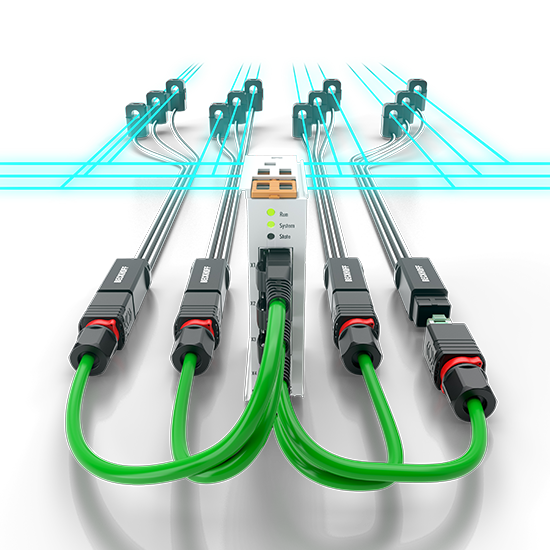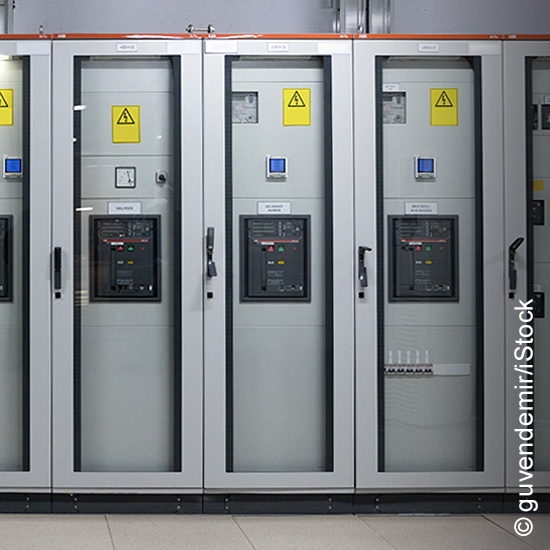Increasing power consumption and tougher requirements on energy availability are instigating a market transformation for data centers. In this episode of Trade Show TV from Data Centre World 2025, Beckhoff showcases modular, flexible solutions for controlling all data center systems.
更多关于此视频的信息
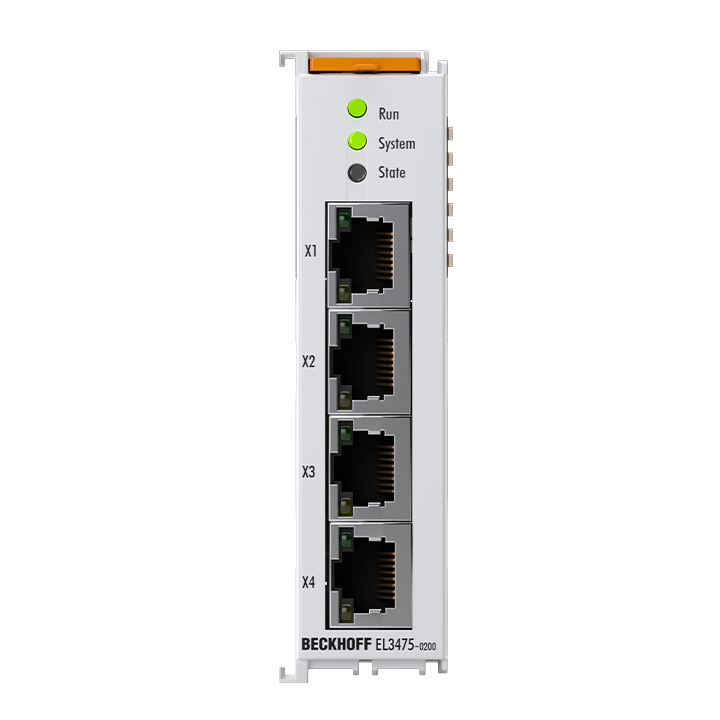
EL3475-0200 | EtherCAT Terminal, 12-channel analog input, 4-port, multi-function, 333 mV, 24 bit, distributed power measurement, RJ45, extended functionalities
The EL3475-0200 is a 12-channel analog input that, with a 24-bit resolution and an input voltage of 333 mV, enables simple and detailed measurements in supply networks. With four RJ45 connections that can each connect three current and/or voltage transformers, the EL3475-0200 is multi-functional and the ideal solution for keeping installation simple in demanding applications.
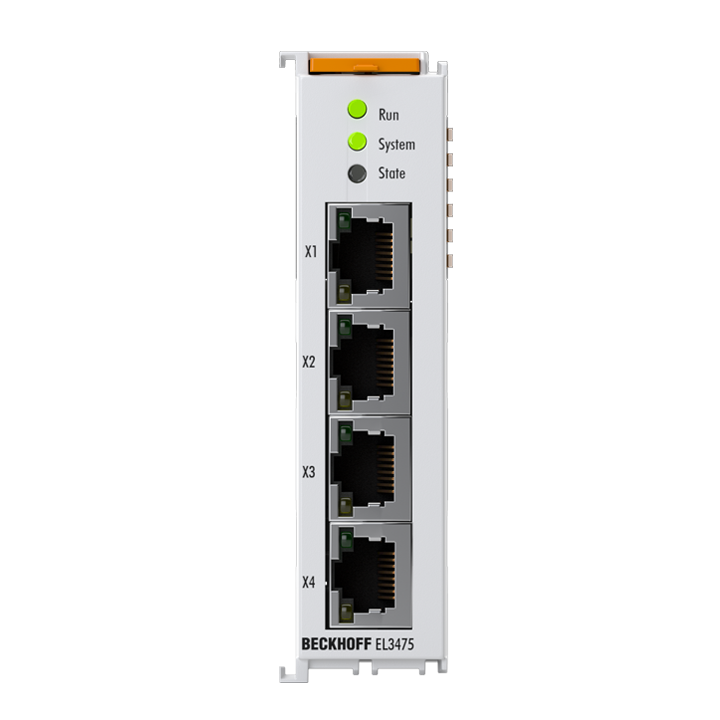
EL3475 | EtherCAT Terminal, 12-channel analog input, 4-port, multi-function, 333 mV, 24 bit, distributed power measurement, RJ45
The EL3475 is a 12-channel analog input that, with a 24-bit resolution and an input voltage of 333 mV, enables simple and detailed measurements in supply networks. With four RJ45 connections that can each connect three current and/or voltage transformers, the EL3475 is multi-functional and the ideal solution for keeping installation simple in demanding applications.
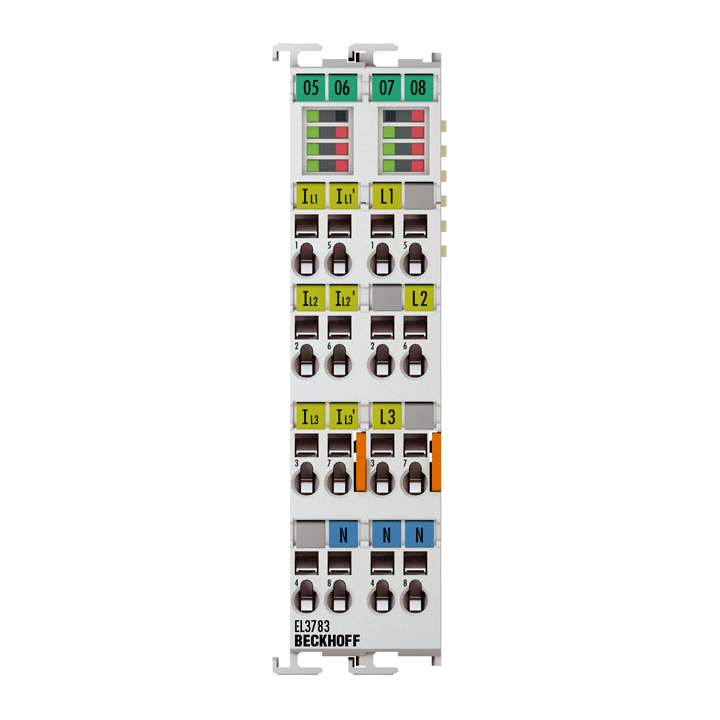
EL3783 | EtherCAT Terminal, 3-channel analog input, multi-function, 690 V AC, 1/5 A, 16 bit, 20 ksps, electrically isolated, oversampling
The EL3783 EtherCAT Terminal is a power monitoring I/O terminal used for state monitoring of a 3-phase AC voltage system. For each phase, voltage up to 400/690 Vrms and current up to 1 Arms/5 Arms are sampled as instantaneous values with a resolution of 16 bits. The six channels are measured simultaneously based on the EtherCAT oversampling principle with a temporal resolution of up to 50 µs and then passed on to the control system. With the processing power available there and in combination with the TwinCAT Function TF3650, true RMS or power calculations as well as complex user-specific algorithms can be calculated via the voltage and current characteristics. Through the oversampling principle, the terminal is able to measure at significantly shorter intervals than the cycle time of the control system. AC and DC parameters must be connected and measured with a common reference potential.
